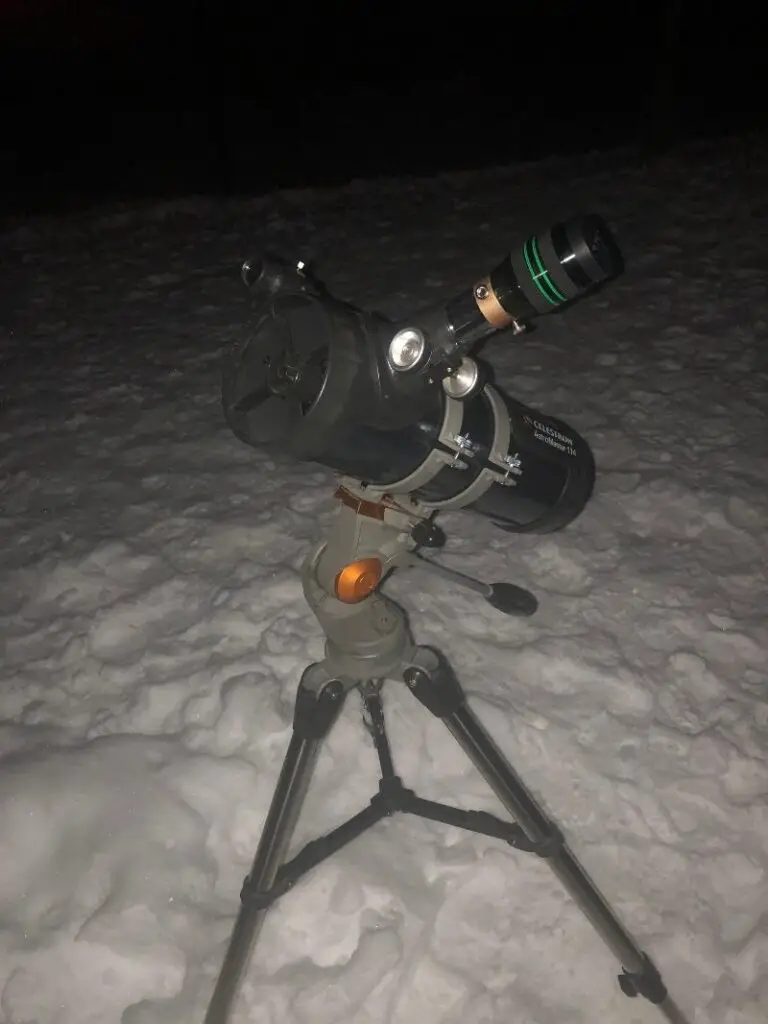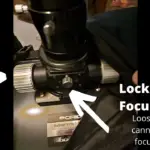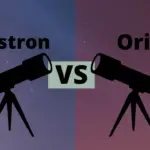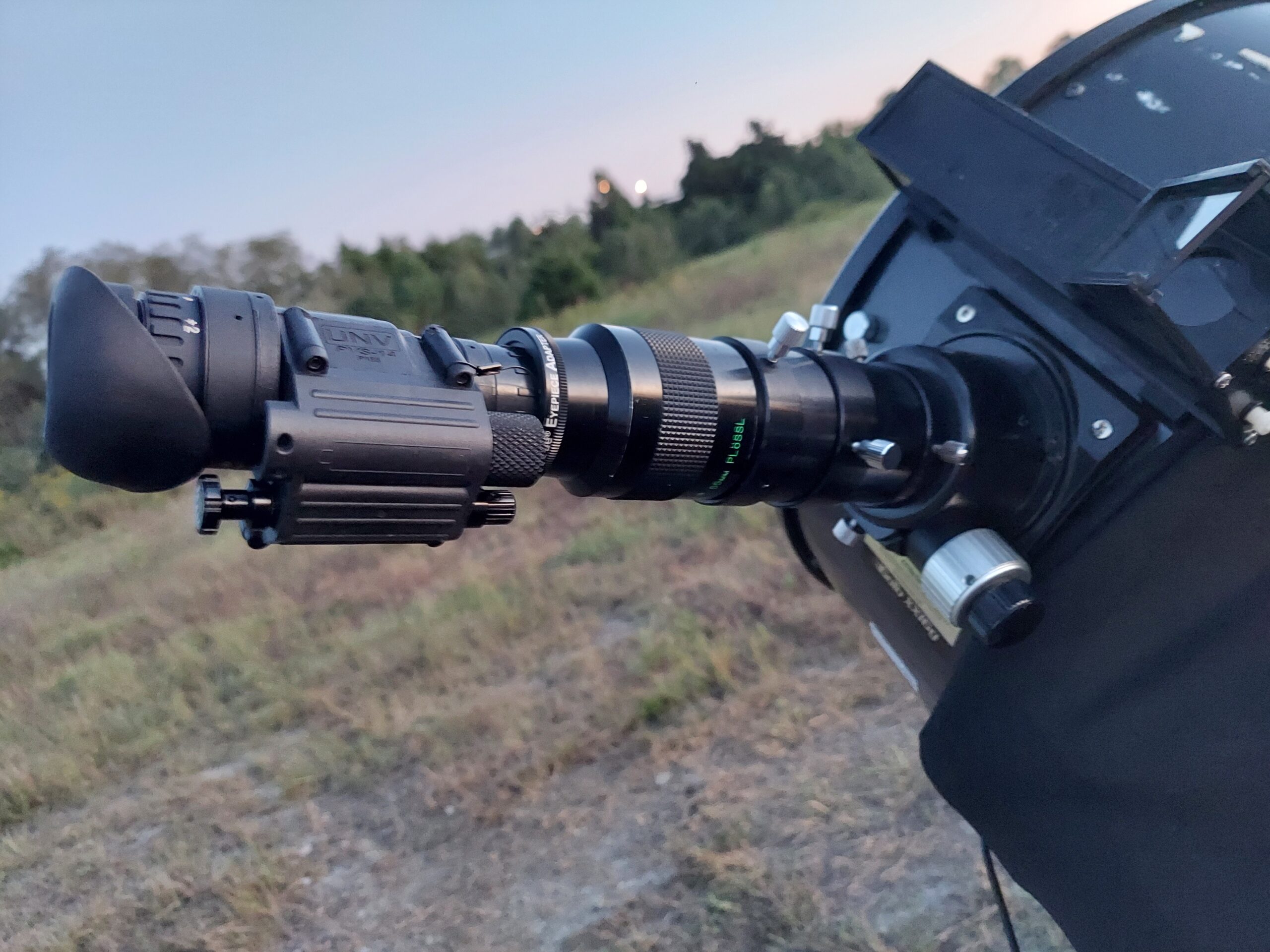If you spend enough time researching beginner telescopes online, you’ll eventually encounter a curious-sounding instrument called the Bird-Jones reflector.
This type of telescope is possibly the least-respected of all astronomical instruments, and retailers are careful not to advertise telescopes as being Bird-Jones designs.
So, what are these things, and how do you identify them?

Bird-Jones telescopes are a type of modified Newtonian reflector. Technically, they are catadioptric telescopes, meaning they use a combination of lenses and mirrors in their optics.
This puts them in the same category as Schmidt-Cassegrain and Maksutov telescopes, but the Bird-Jones is a different animal.
How Do I Tell If a Telescope is a Bird-Jones?
On the outside, they are hard to distinguish from regular short-focus reflectors. In fact, they are often advertised as Newtonian reflectors, as in the case of the Celestron Powerseeker 127EQ.
How, then, can we tell a Bird-Jones apart from a Newtonian? The answer lies in the focal length.

Newtonian reflectors have focal lengths comparable to the length of the optical tube. Consider the popular Orion XT8 Classic, which has a focal length of about 47” and an optical tube length of 46.5”.
Compare this to the Powerseeker 127EQ, which fits a 39” focal length into a 20” tube.
A long focal length in a short tube is a known feature of catadioptric telescopes, not Newtonians.
If the scope looks like a Newtonian (or is advertised as one) but has a focal length around twice the length of the optical tube, it is most likely a Bird-Jones.
This is especially true if the telescope fits into the lower price categories.
Many, even very reputable companies, will advertise Bird-Jones telescopes as Newtonian Reflectors because they can be categorized that way, but they do not function the same way, so be sure to find out the exact numbers. You may have to dig for the optical tube length, but looking at focal length and tube length is what will really tell you what you are dealing with.
A few more examples of each are in the table.
| Traditional Newtonian Reflector | Focal Length | Tube Length | Bird Jones | Focal Length | Tube Length |
| Orion XT8 Classic | 47” | 46.5” | PowerSeeker 127EQ | 39” | 20” |
| Apertura AD8 8” Dobsonian | 47.24” | 46.13” | Celestron AstroMaster 114EQ | 39.37” | 18” |
| Orion 8945 SkyQuest XT8 Classic | 47” | 46.5” | NexStar 114 SLT | 25.5” | 18” |
What is a Corrector Lens? Why Do Bird-Jones Telescopes Have Them?
There is a reason Bird-Jones scopes have such long focal lengths, and that reason has to do with their primary mirrors.
Newtonians typically use parabolic mirrors, whereas Bird-Jones reflectors use spherical mirrors. These terms describe the shape of the mirror’s curve, and while the optical details get rather technical it is enough to say that parabolic mirrors can focus light more precisely than spherical mirrors, and are more expensive to produce, while the cheaper spherical mirror produces reflections with noticeable aberrations which distort the image.
Note that small spherical mirrors are not exclusive to Bird-Jones telescopes by any means: cheap tabletop reflectors with names like First Scope and FunScope also use these optics.
But it is not the spherical mirror which produces the long focal length; it is the corrector lens.
This concept is more familiar in Schmidt-Cassegrain telescopes, where light enters through a lens called a corrector plate before striking the spherical primary mirror. You can find more information about focal length in Schmidt-Cassegrain telescopes in the linked article.
It is then reflected to a secondary mirror before being bounced back down the tube, through a hole in the primary, and to the eyepiece or imaging camera. This folded light path allows for long focal length in short tubes, and the corrector plate nullifies the spherical aberration of the primary mirror.

The Bird-Jones is different. Its light path is the same as a Newtonian reflector until it reaches the focuser.
Inside the focuser there is a permanently installed corrective lens which is similar to a barlow lens, increasing the effective focal length and minimizing the spherical aberration from the mirror.
This differs from SCT and Maksutov designs, which have full-aperture corrective lenses at the top of the tube.
In principle, this design can work well if implemented with a corrector lens which is matched to the mirror. In the case of the Bird-Jones, the problem isn’t so much the optical design as the execution of it.
Why Do People Hate Bird-Jones Telescopes?
The most often-mentioned reason for people hating Bird Jones scopes is that they are difficult to collimate.
Collimation is the process of aligning the mirrors of a reflecting telescope so that the light comes into proper focus; in a Bird-Jones, this process is complicated by the corrector lens.
This lens will diffuse the light from a laser collimator, rendering it useless, and will also make it difficult to get a good view of the primary and secondary mirror positions when trying to collimate by eye using a collimation cap, for instance.
This is not to say that collimation is impossible; but since lasers are out of the question, and there is usually no center marking on the mirror for use with a collimation cap, the best you can do is eyeball the alignment, or perform a star test in the field.
That is, unless you want to remove the corrector lens, which involves disassembling the focuser. Again, not an impossible task, but hardly something to assign to a raw novice in astronomy.
The new user is not helped by the manual, which in most cases won’t even mention the corrector lens at all and certainly won’t instruct you on how to remove the focuser.
The other reason is more of an indictment against low-cost telescopes in general. These telescopes are sold by well-known brands like Celestron, Meade, and Bushnell through big box stores. They sell a ton of these things, mostly to novices who will struggle with long focal length on a shaky mount, the inferior accessories, and low-grade hardware.
1000mm is quite a long focal length to use on the sorts of shoddy mounts and tripods which are supplied with these kits.
At this focal length, a telescope is harder to aim and more prone to shakes than a shorter instrument. And while it is true that long focal lengths are better for viewing the moon and planets, sharp views of such objects require good collimation, and as we’ve already discussed that is a challenge with a Bird-Jones.
In my view, low-priced telescopes are generally better at short focal lengths, unless you can verify the sturdiness of the mount beforehand. In the case of the 127EQ or its cousin, the 114AZ, the mount and telescope are not so well-matched.

The Bird-Jones design is probably not that much worse than other telescopes in this price category, but when the new telescope owner is already facing an uphill battle with modest equipment it would seem better to avoid a design like the Bird-Jones which offers additional hassle without any apparent upside.
Stay tuned for an upcoming article in which I will get my hands on one of these infamous scopes and try to find out if it really deserves its reputation as the worst telescope you can buy!





